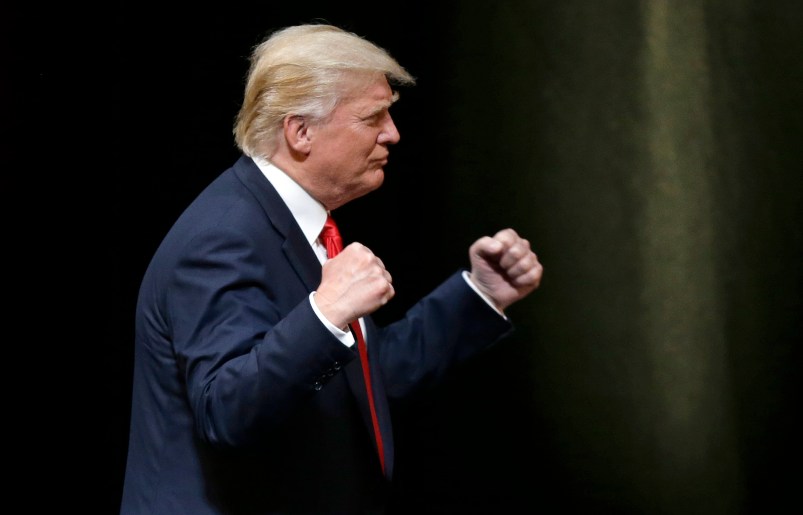There was a floor fight, a plagiarized prime time speech, a long-winded Rudy Giuliani, a dark mood – and then the convention hall began emptying before the GOP’s rising star Joni Ernst (R-IA) rose to speak.
It’s been a surreal 24 hours at the Republican convention, an event that
political strategists say is befuddling to them to say the least.
“The program was kind of crazy. Poor Joni Ernst got left out to dry,” said
Ryan Williams, a Republican strategist and former Mitt Romney aide who opted
out of attending the convention this cycle. “I cannot remember a convention
that the timing was so poorly done the first night.”
Party conventions are typically staged, meticulously choreographed primetime
TV spectacles dripping in fanfare. Even in the worst of times (in both 2008
and 2012 Republicans contended with literal hurricanes interfering with their
conventions). The trouble the nominee’s campaign and party committees go
to to ensure the event is perfectly on message is painstaking (one strategist recounted the dozens of convention speechwriters who crank out perfectly pitched platitudes for the rank-and-file speakers.) It’s why some strategists are blown away by the first quarter flubs by the Trump campaign.
“I can’t imagine how a campaign could put the candidate’s spouse out there with material that was clearly lifted,” Williams said.
On Tuesday, rather than follow the usual rules of political scandals, get out ahead of the story, apologize and move on, the Trump campaign actually denied Melania Trump’s speech was plagiarized at all.
“You try to keep it a one day story, get it over with and move on,” said Ed Goeas, a Republican pollster and program director at the 2008 convention. “Usually what that entails is you throw someone under the bus.”
The Trump campaign–with its lack of infrastructure and funding shortcomings–perhaps needed a flawless convention even more than its predecessors, an event to formally recalibrate and recast Trump as a more acceptable nominee than the crass-talking figure the party leaders see on their televisions every day.
“You need to have four days of picture perfect convention,” said Michael Cohen, a former speech writer and now columnist at the Boston Globe. “It just tells you so much about Trump himself and what kind of president he would be. They lash out at enemies, they refuse to take responsibility for mistakes. It is just extraordinary.”
It’s not that political conventions aren’t usually without their trying scheduling
moments or snafus, but campaigns do try extraordinarily hard to mitigate
those and when they cannot, quickly attempt to neutralize them with
apologies. Williams, the Romney aide, recounted the now-infamous moment
when Clint Eastwood unloaded a stream of consciousness to a chair as
America watched. And, despite the fact that Romney’s speech was
redrafted more than 25 times, how no one caught there was no allusion to
the troops until it was too late.
Goeas recalled how in 2008, Giuliani had also been long winded, which ran vice presidential candidate Sarah Palin’s speech past 11 p.m.
What Republicans have gotten so far is the same wild card, ragtag, thrown together presentation they’ve been calling on Trump to change for months. Off-stage, Scott Baio doubled down on a tweet calling Hillary Clinton a “cunt” and still hanging in the air was frustration by delegates that Trump was the nominee at all.
“They had people stepping all over the message. It does not bode well,” said Norm Ornstein, a political scientist and resident scholar at the American Enterprise Institute who recalled that sloppy convention can sometimes be a
forecaster of bad elections down the road.
“This is not a great sign for the Trump campaign,” Ornstein said.







THIS IS GREAT NEWS FOR JOHN MCCAIN!
So far the Republican convention has been an abortion.
Will the real Heisenberg please stand up?
But this time, Republicans actually care about the health of the mother.
It hasn’t been enough of a disaster for my liking, but there’s still three nights to go…